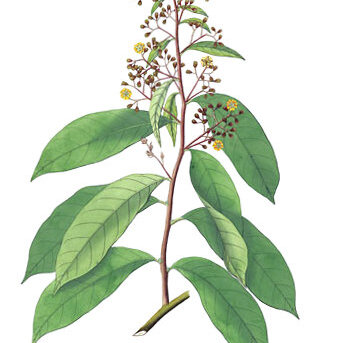Woody climbers or creepers, sometimes straggling shrubs, rarely small trees. Older branches with orbicular to oval lenticels or with longitudinal cork-ridges. Leaves simple, entire, often more or less acuminate at apex; midrib distinctly prominent beneath, nerves and venation otherwise variable. Petiole short, channelled above, usually with some low longitudinal ridges and many small rather sharp transverse ridges. Inflorescences terminal or axillary, paniculate, rarely flowers solitary. Bracts usually minute, caducous. Flowers fragrant. Pedicel usually with 2, sometimes fewer or more, minute caducous bracteoles. Sepals 5, free, usually hairy outside except along in bud covered margins which are glabrous or at least distinctly less hairy for some breadth, allways glabrous inside, 2 outer sepals generally different in shape from 2 inner ones, third sepal for one side agreeing with 2 outer ones, for other side with 2 inner ones. Corolla deeply 5-lobed, tube glabrous outside, each lobe (petal) with about triangular, outside hairy, midpetal-ine field, and 2 lateral lobules, glabrous, rather thin, with distinct, mainly longitudinal venation, to rather thick, with indistinct venation (in dried specimens), rarely club-shaped; corolla glabrous inside except in 2. E. praecipua. Stamens 5, inserted slightly above corolla-base, with short, about triangular or laterally concave filament; anther usually obtuse to acuminate at apex, cordate at base, sometimes truncate to retuse at both ends. Pollen smooth. Ovary about ellipsoid, glabrous or partly to completely hairy, 1-celled, with 4 (rarely in a casual flower 5) basal ovules; stigma usually about conical, attached to the ovary in the centre for small diameter, usually with 5 or 10 longitudinal, straight, or slightly contorted ridges, rarely crown-like, funnel-shaped in centre above, attached to the ovary for nearly the whole diameter of the latter. Fruit a berry, generally little fleshy, ellipsoid or, rarely, obpyriform, glabrous, smooth or scurfy, or hairy; one-seeded; seed with plain or strongly folded cotyledons.
More
Stranglers, woody or scandent shrubs. Stems lenticellate, young parts glabrous or reddish tomentose, hairs 2-armed or stellate (or ?simple). Leaves petiolate, entire, leathery or papery. Inflorescences terminal or axillary, racemose or paniculate; bracts early deciduous, usually minute. Flowers small, fragrant. Sepals free, persistent, subequal, leathery, usually pubescent abaxially. Corolla white or yellow, deeply 5-lobed; tube short, glabrous outside; lobes of limb 2-lobulate apically, midpetaline bands densely appressed pubescent outside; lateral lobules rather thin, glabrous, with distinct or indistinct venation. Stamens included; filaments triangular or laterally concave; anthers obtuse or acuminate apically, cordate basally, sometimes truncate to retuse at both ends; pollen not spiny. Ovary globose or ellipsoid, 1-loculed, 4-ovuled. Stigma subsessile, ± conical, with 5-10 longitudinal, straight or spirally twisted ridges. Fruit a slightly fleshy berry. Seed 1.
In scrub or forests, from low altitude up to ca 1300 m altitude.An ecologically interesting species of this genus is 12. E. stenophylla which belongs to the rheophytes, i.e. plants which are confined to (mostly) gravelly or rocky beds of streams subject to sudden floods. The narrow, often falcate, leaf-shape of the species confined to this remarkable ecological niche is characteristic and E. stenophylla perfectly fits into this group.Another ecologically interesting species is the cauli-and ramiflorous 7. E. ramiflora, the single species of the genus showing this feature.

